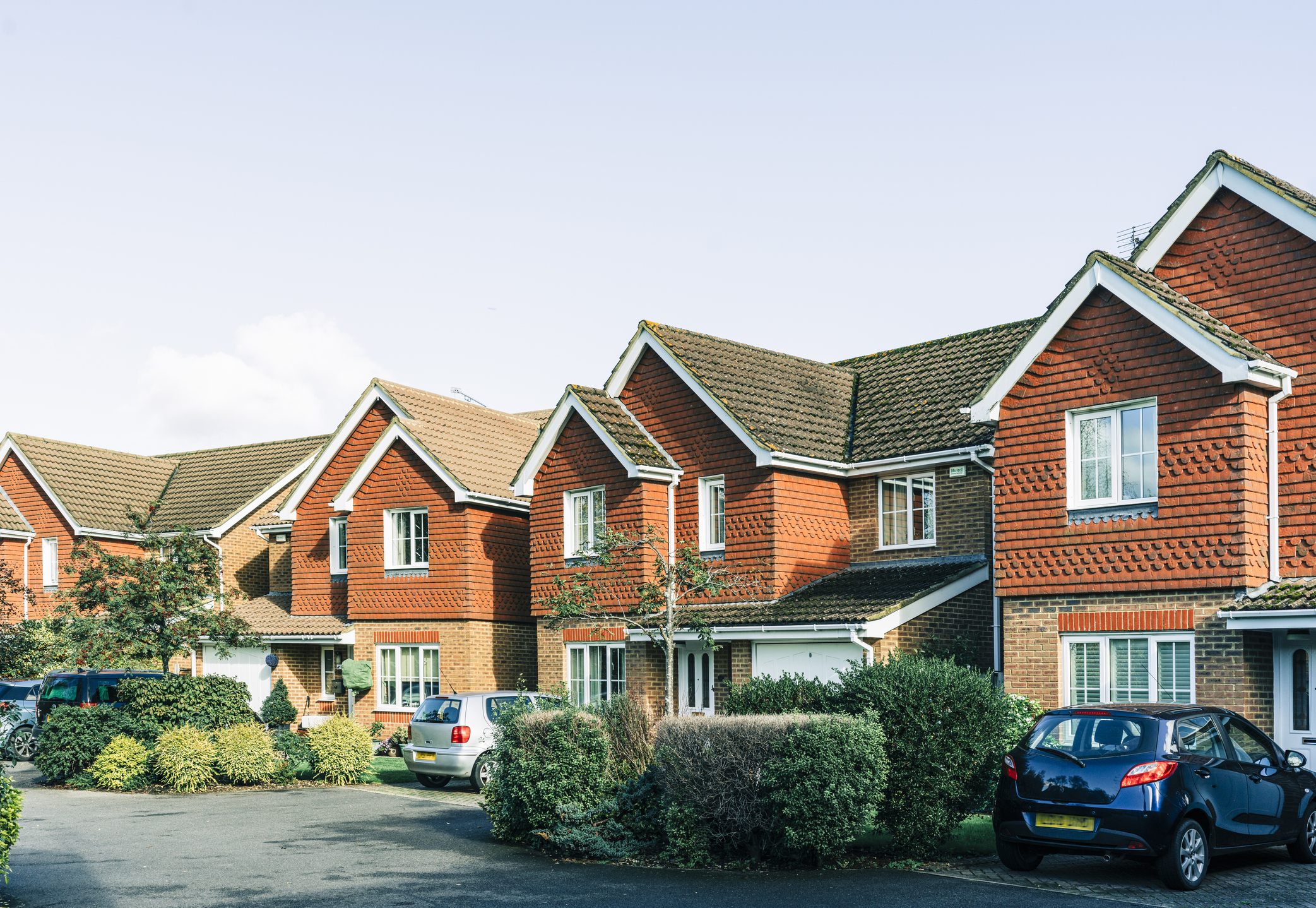What’s happening with UK house prices? Latest property market moves and forecasts
House price growth has slumped in the build-up to the Autumn Budget and forecasts suggest it may slow further following the latest fiscal update. Where are prices heading for the rest of 2025 and beyond?


House price growth stalled ahead of the Autumn Budget and values have dropped in the higher priced south of the country but there are hopes of a recovery now that the fiscal update is out of the way.
The latest Halifax House Price Index shows house price growth was flat across the UK on a monthly basis and slowed annually from 1.9% in October to 0.7% in November - the weakest reading since March 2024.
In London prices fell by 1%, the South East by 0.3% and Eastern England by 0.1%.
MoneyWeek
Subscribe to MoneyWeek today and get your first six magazine issues absolutely FREE

Sign up to Money Morning
Don't miss the latest investment and personal finances news, market analysis, plus money-saving tips with our free twice-daily newsletter
Don't miss the latest investment and personal finances news, market analysis, plus money-saving tips with our free twice-daily newsletter
This echoes the latest Nationwide House Price Index, which showed annual price growth slowed from 2.4% to 1.8% between October and November 2025.
The slowdown has been attributed to the uncertainty caused by the build-up to the Autumn Budget on 26 November, which introduced a new mansion tax charge for homes worth £2 million and above as well as higher property income tax charges for landlords.
Chancellor Rachel Reeves announced in her Autumn Budget that the property basic rate of tax will rise from 20% to 22% from April 2027. For higher rate taxpayers, it will increase from 40% to 42%, and from 45% to 47% for additional-rate taxpayers.
New forecasts from the Office for Budget Responsibility (OBR) suggest this could have an impact on the property market and house price growth.
The OBR said it expects the increase to property income tax rates from April 2027 to reduce house price growth by around 0.1 percentage points a year from 2028.
The average house price in the UK is expected to rise from £260,000 in 2024, to just under £305,000 in 2030, according to the OBR.
The latest data from the Office for National Statistics (ONS) House Price Index also shows speculation about property tax changes has already had an impact on the property market.
Average property values fell by 0.6% between August and September, the first drop since April 2025, according to the ONS. Annual price growth was 2.6%, which is down from 3.1% in August, putting average prices at £271,531.
There are hopes that with the uncertainty of the Autumn Budget out of the way and expectations of interest rate cuts now that inflation is slowing, house prices could be set for a boost in 2026.
What do official house price figures show?
There are at least five different indices that measure how much UK house prices have gone up or down over the past month and year, but the most authoritative source is HM Land Registry.
The Land Registry has the most comprehensive data set, as it includes cash purchases as well as those financed through a mortgage, but the main drawback is that it is published with a six-week time lag. This means other sources can give a better snapshot of current conditions.
The latest official figures from the Office for National Statistics (ONS) show house prices in the UK fell by 0.6% between August and September, the latest month for which data is available.
The ONS records the average price of a UK house at around £271,531.
In contrast, Halifax and Nationwide’s house price indices report different average house prices as they can only use data from their own customers’ transactions and therefore report different figures.
Consumer confidence remains low
Housebuyers in the UK are at their least confident this financial year, according to new data, as murmurings of tax hikes are spooking buyers across the market.
On top of a weakening labour market and a slowing economy, the latest sentiment survey from the Royal Institution of Chartered Surveyors (RICS) reveals new buyer enquiries fell 24% in October, the weakest reading since April. At the same time, agreed sales are also down 24%.
This is particularly the case for the upper end of the property market. Data from Zoopla shows house prices in London and the South recorded their first fall in 18 months at the start of November, driven by Budget uncertainty and more homes for sale, boosting choice for home buyers.
UK-wide buyer demand dropped 12% annually, whilst sales agreed fell 4%.
Richard Donnell, executive director at Zoopla, said: “The Budget bark was worse than the Budget bite for the housing market. Home buyers and sellers will welcome the end of the uncertainty that has stalled housing market activity since the late summer. Our data shows the underlying demand to move home remains strong. With greater certainty we expect a rebound in housing market activity that builds into the new year with households who paused home moving decisions over recent months return with greater confidence.”
Where are house prices forecast to go?
Asking prices are a useful barometer for market sentiment as it currently stands. These snapshots tend to be published only a few weeks after the data was recorded.
The latest data from Rightmove shows asking prices fell by 1.8% between October and November 2025, a larger drop than usual. Average asking prices are also down by 0.5% annually.
The drawback is that asking prices don’t necessarily reflect the final sold price.
But despite a resilient few months, the housing market is forecast to soften slightly in the near term, as the Royal Institution of Chartered Surveyors expects prices to fall in the next three months.
However, once policy direction stabilises, RICS expects a rise in the medium term with prices climbing again in the next 12 months.
Meanwhile, long-term expectations have also been tempered. Real estate services firm Savills now expects house prices to have grown just 1% overall in 2025, down considerably from the 4% the previous forecast.
Sluggish growth is expected to continue into the new year, with prices expected to rise just 2% in 2026.
Better news does seem to be on the horizon, however. Growth is forecast to pick up between 2027 and 2030, bringing total growth from 2025 to 2030 to 22.2%.
This growth is expected to be powered by strong performance in Yorkshire and The Humber and North East England, which are both forecast to grow 28.8% by 2030.
Will house prices rise beyond 2025?
Despite trimming their forecasts, some experts think house price growth could pick up in 2026 and beyond. Savills is currently forecasting 4% growth in 2026, 6% in both 2027 and 2028, and 5.5% in 2029.
The estate agency expects wages to grow 22% between 2025 and 2029. Combined with a strengthening economy in the latter part of this time frame, it thinks it will “boost buyer confidence and the willingness to take advantage of improved mortgage conditions”.
Savills also thinks falling mortgage rates and more relaxed affordability tests from lenders could boost transaction volumes, making it easier for first-time buyers to get onto the housing ladder. Following encouragement from policymakers, some lenders are allowing mortgage customers to borrow more than they could previously.
Under the old rules, less than 10% of new mortgages exceeded 4.5 times a borrower’s income, but the Bank of England recently said it would be happy to see that percentage rise to more than 15%. Nationwide said it means applicants can borrow £28,000 more on average.
These forecasts were from before the Autumn Budget policy changes and the most recent forecasts, from the OBR on 26 November, suggest house prices will grow by 2.9% in 2025, 2.2% in 2026, 2.8% in 2027, 2.7% in 2028, 2.6% in 2029 and by 2.4% in 2030.
Knight Frank has more muted expectations than Savills, but still expects the rate of house price growth to pick up from 2026. It is forecasting growth of 3% in 2026, 4% in 2027, 4.5% in 2028 and 5% in 2029.
Tom Bill, head of UK residential research at Knight Frank, said: “Both main UK indices show how pre-Budget uncertainty pushed house price growth close to zero. Clarity has now returned, but an array of tax rises, which include an income tax threshold freeze, will increasingly squeeze demand and prices. Offsetting that is the fact that mortgage rates are expected to drift lower next year as the base rate bottoms out at around 3.25%.”
Get the latest financial news, insights and expert analysis from our award-winning MoneyWeek team, to help you understand what really matters when it comes to your finances.
Daniel is a financial journalist at MoneyWeek, writing about personal finance, economics, property, politics, and investing.
He is passionate about translating political news and economic data into simple English, and explaining what it means for your wallet.
Daniel joined MoneyWeek in January 2025. He previously worked at The Economist in their Audience team and read history at Emmanuel College, Cambridge, specialising in the history of political thought.
In his free time, he likes reading, walking around Hampstead Heath, and cooking overambitious meals.
-
 MoneyWeek news quiz: How much can you win in Premium Bonds?
MoneyWeek news quiz: How much can you win in Premium Bonds?Quiz Premium Bonds, ChatGPT, and the start of the festive season all made headlines this week. How closely were you following the news?
-
 Salary sacrifice pensions cap: 3.3 million workers to be hit by contribution limits
Salary sacrifice pensions cap: 3.3 million workers to be hit by contribution limitsThe government has revealed further details of its controversial cap on pension contributions through salary sacrifice. Here is how the changes could affect you
